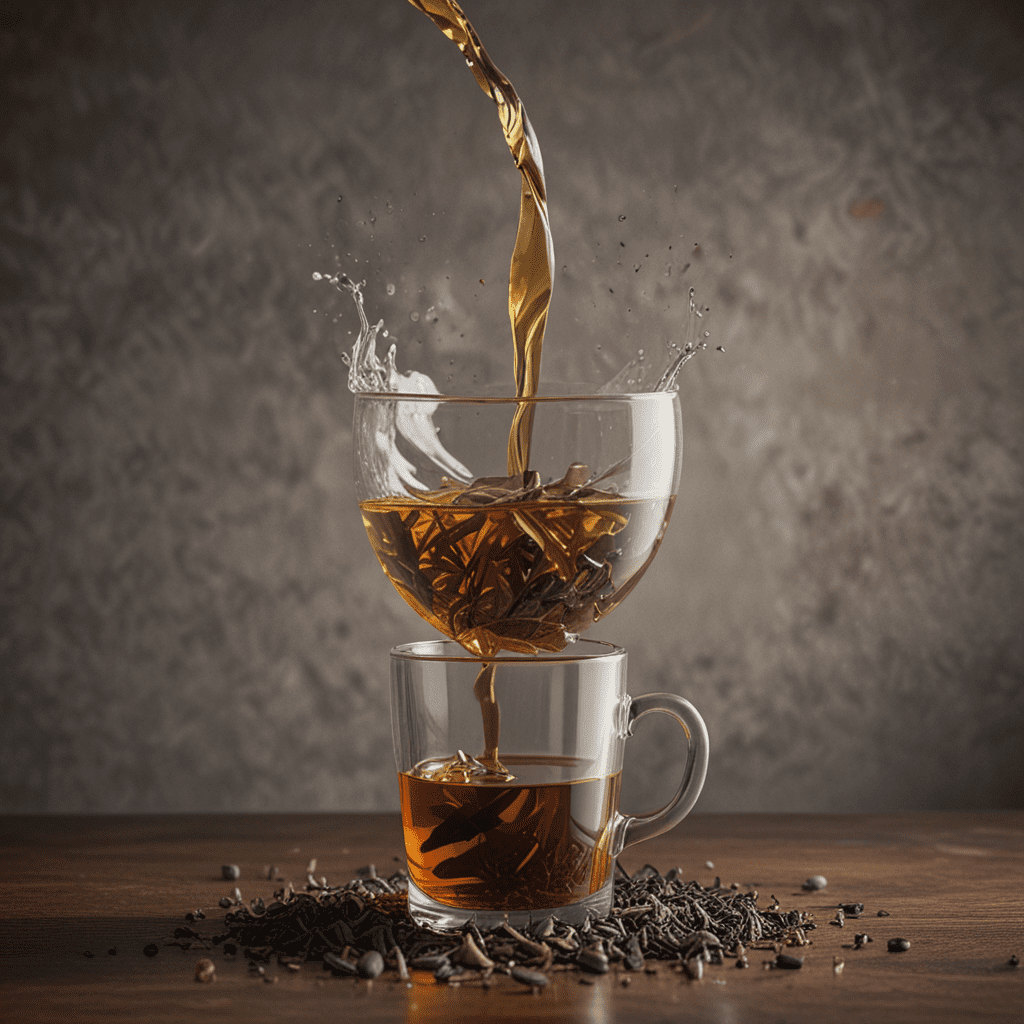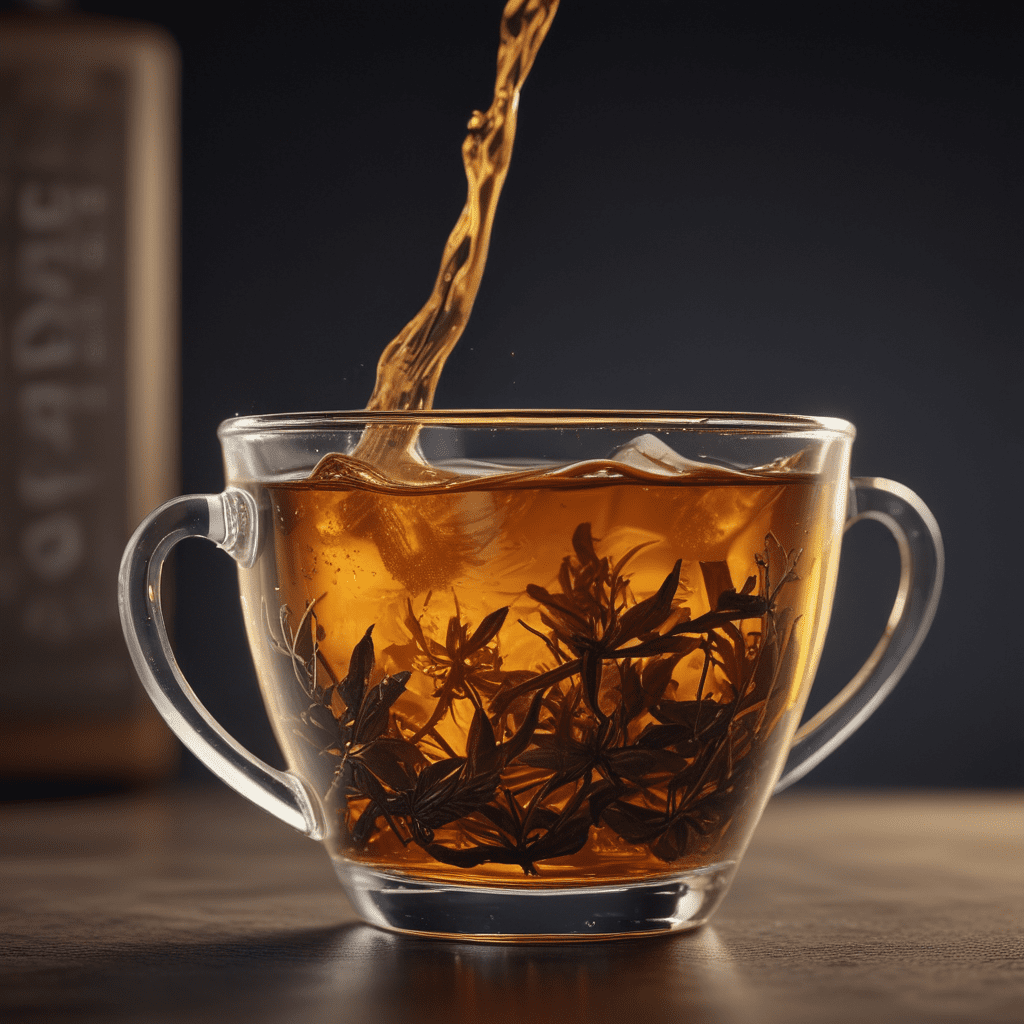
1. Introduction: The Allure of Ceylon Tea
Ceylon tea, renowned for its distinctive character and exquisite flavors, holds a prominent place in the world of tea connoisseurs. Grown in the pristine highlands of Sri Lanka, this exceptional tea embodies a rich history, captivating aroma, and alluring taste that sets it apart from the ordinary. Embark on a journey into the enchanting world of Ceylon tea, where the art of blending unveils a symphony of flavors and aromas.
2. The Craft of Tea Blending
Tea blending is an art form that transcends mere mixing; it's a symphony of flavors and aromas, a harmonious dance of different teas. Master blenders possess an intimate understanding of the nuances of each tea, their unique characteristics, and the potential synergies that arise when combined. Through meticulous experimentation and a deep appreciation for the subtleties of tea, they craft exquisite blends that delight the palate and soothe the soul.
3. Understanding the Tea Plant and Its Variations
The tea plant, Camellia sinensis, holds the secret to the diverse flavors of Ceylon tea. It adapts remarkably to varying growing conditions, yielding a vast array of teas with distinct flavor profiles. The four main tea types – black, green, white, and oolong – each undergo unique processing methods, resulting in a spectrum of flavors, from robust and malty to delicate and vegetal. Understanding the intricacies of these variations is fundamental to creating exceptional tea blends.
4. The Role of Origin, Terroir, and Oxidation in Tea Flavor
Tea's birthplace profoundly influences its flavor. Ceylon tea, grown in Sri Lanka's diverse regions, exhibits a range of flavor profiles due to variations in altitude, climate, and soil composition. Terroir, the unique combination of these factors, imparts each tea with a distinctive character. Furthermore, the degree of oxidation, a crucial factor in tea processing, significantly shapes the flavor, influencing the spectrum from light and refreshing to bold and full-bodied.
5. Selecting Complimentary Teas for Blending
Selecting the ideal teas to blend requires a discerning eye and a deep understanding of their individual characteristics. Master blenders seek teas that complement each other, balancing flavors and creating harmonious blends. The choice of teas depends on the desired flavor profile, whether it's a delicate balance, a robust blend, or a captivating contrast. By carefully selecting complimentary teas, blenders lay the foundation for creating extraordinary tea experiences.
6. The Art of Balancing Flavors and Creating Harmony
In the realm of tea blending, the harmonious balance of flavors is paramount. Master blenders employ a keen understanding of flavor profiles, carefully selecting teas that complement and enhance each other's characteristics. The goal is to create a blend where each tea's unique notes intertwine seamlessly, resulting in a symphony of flavors that delights the palate. This delicate interplay requires meticulous attention to detail and an intuitive sense of balance, as even the slightest adjustment can significantly alter the overall taste experience.
7. Techniques for Blending Teas: Proportions and Ratios
The art of tea blending involves precise proportions and ratios, ensuring the harmonious balance of flavors. Master blenders meticulously calculate the quantities of each tea to achieve the desired taste profile. The proportions depend on the characteristics of the selected teas and the desired outcome. A well-crafted blend showcases the unique strengths of each tea while creating a cohesive and captivating flavor experience. Whether aiming for a robust blend or a delicate balance, the proportions and ratios are integral to achieving the perfect tea symphony.
8. Experimenting with Aromatics, Herbs, and Spices
Beyond the realm of pure tea blends, the art of tea blending extends to the inclusion of aromatics, herbs, and spices. These additional elements introduce a captivating dimension of flavors and aromas, enhancing the tea experience. Master blenders explore a vast array of ingredients, from fragrant flowers to invigorating spices, seeking harmonious combinations that complement the base teas. The addition of these elements allows for the creation of truly unique and captivating blends that cater to diverse palates and preferences.
9. The Importance of Aging and Oxidation in Blending
Aging and oxidation play pivotal roles in the art of tea blending, influencing the flavor profile and complexity of the final product. Master blenders harness the transformative power of time, allowing blended teas to undergo a period of aging, resulting in the mellowing and deepening of flavors. Oxidation, a natural process, further contributes to the development of the tea's character. By carefully controlling the aging and oxidation process, blenders refine and enhance the tea's taste experience, creating blends with remarkable depth and sophistication.
10. Conclusion: Mastering the Art of Ceylon Tea Blending
Mastering the art of Ceylon tea blending is a journey of exploration, experimentation, and unwavering dedication. It requires a deep understanding of the nuances of each tea, an intuitive sense of balance, and a passion for creating exceptional tea experiences. By selecting complimentary teas, carefully blending proportions, and harnessing the transformative power of aging and oxidation, master blenders craft exquisite blends that captivate the senses. The art of Ceylon tea blending is a testament to the boundless possibilities of tea, inviting tea enthusiasts to embark on a flavorful voyage of discovery and indulgence.
Frequently Asked Questions (FAQs)
Q: What are the key factors that influence the flavor of Ceylon tea?
A: The flavor of Ceylon tea is influenced by a combination of factors, including the tea plant's variety, the region where it's grown, the processing method, and the degree of oxidation.
Q: How do master blenders create harmonious tea blends?
A: Master blenders select complimentary teas based on their flavor profiles and carefully calculate the proportions and ratios of each tea to achieve a balanced and cohesive taste experience.
Q: What are the benefits of aging and oxidation in tea blending?
A: Aging and oxidation can enhance the flavor profile of blended teas, resulting in a mellowing and deepening of flavors. Oxidation also contributes to the development of the tea's character.
Q: What is the importance of understanding the terroir of Ceylon tea?
A: Terroir refers to the unique combination of environmental factors, such as climate, soil, and altitude, that influence the flavor of tea. Understanding the terroir of Ceylon tea allows blenders to select teas with specific flavor characteristics.
Q: How can tea enthusiasts explore the art of Ceylon tea blending?
A: Tea enthusiasts can explore the art of Ceylon tea blending by experimenting with different teas, proportions, and aging techniques. Starting with small batches and seeking guidance from experienced blenders can help them develop their skills and create their own unique blends.


